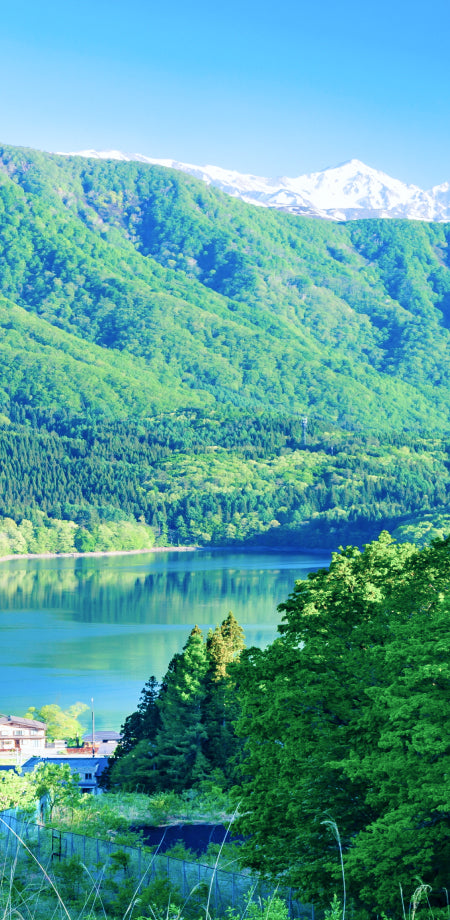投稿日:
更新日:
SouthShinshu"Ichida Persimmon" nurtured by people and the climate (web-only article)
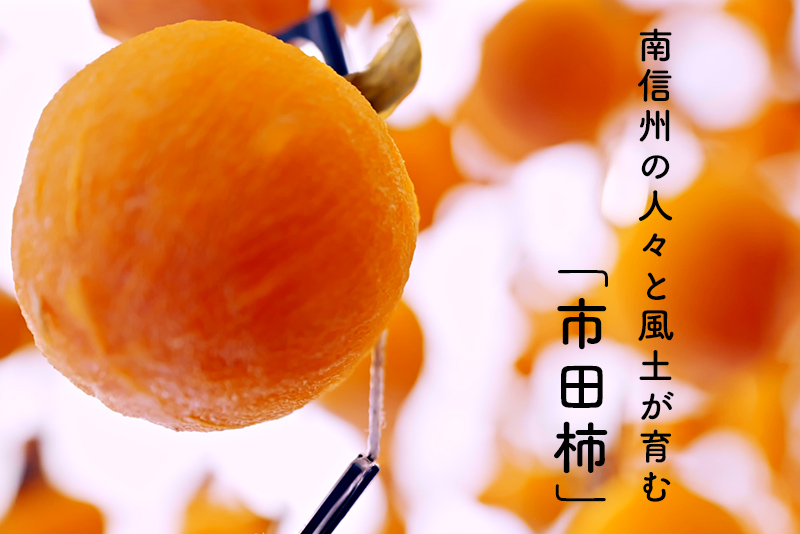
Ichida Kaki was celebrated its 100th anniversary in 2021.
South in late autumnShinshuではあちこちで柿を吊るす光景が見られ、柿の甘い香りが町中に広がり、
Even now, southShinshuIt is popular as a tradition that will mark the arrival of winter.
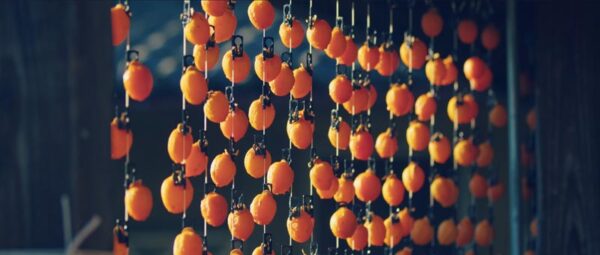
Ichida persimmon was once hung on the eaves of the house. It is currently produced under thorough management in drying areas scattered throughout the town.
Persimmons are hung from late autumn to early winter. The surrounding trees gradually fade, and as they begin to prepare for winter, the persimmons remain bright and vivid, and gradually lose their moisture and turn into dried persimmons, illuminated by the soft late autumn sunlight.
Nagano The prefecture ranks number one in the nation in terms of both production and shipping of dried persimmons. Among them, Nagano Ichida persimmons account for more than 95% of the prefecture's dried persimmon production and shipping volume. Nagano It is called Ichida persimmon because it was cultivated in the Ichida area of Takamori Town, located in the Iida and Shimoina region in the southern part of the prefecture.

Kawai Kazuo
The astringent persimmons, which are dried persimmons, were introduced from China to Japan during the Nara period, and persimmons were cultivated early in the Iida and Shimoina regions. During the Edo period, annual taxes were generally paid in rice nationwide, but it is said that in this area, dried persimmons were paid as "miscellaneous taxes."
The logs of Ichida persimmon were introduced to this area in the late Edo period. It is said that they were taken home from Mino Province (now southern Gifu Prefecture), where they stopped by while visiting Ise. It was originally eaten in a method of grilling it in an irori to remove the astringency and bring out the sweetness, so it was popular at the time under the name "yaki persimmon." Its reputation spread as it was delicious whether grilled or dried, and it became popular in this area. In 1921, it was named after Ichida Kaki, and it was shipped to Tokyo, Nagoya, Osaka, and other prefectures, and in 1926, it was also sold outside the prefecture, Shimoina Branch of the Prefectural Agricultural Experiment Station (now the current state). Nagano The prefectural Minamishin Agricultural Experiment Station was established, and the prefecture encouraged cultivation as a suitable variety for this region, and many Ichida persimmons have been cultivated in this region.
"From the early Meiji period to the early Showa period, sericulture was the mainstay of the industry, and persimmons were also used to apply persimmon tannins, which are effective as fungicides and preservatives to cages and nets for sericulture. As I imagine, persimmon tannins were necessary for sericulture, so I think it spread to this area," says Kawai Kazuo, a member of Ichida persimmon farmer.

The sericulture industry declined over time, and after the war, many farmers changed their business from sericulture to fruit cultivation. Compared to apples and peaches, cultivation has expanded as it is less hassle-intensive to cultivate itself, and it has also been used as a valuable source of income in the winter.
When making Ichida persimmons, the important point of making delicious dried persimmons is to keep the surface soft and remove the moisture inside, and the terrain and climate of this region actually make this a reality.

Image: Asagiri (River Mist)
The Ichida persimmon fields spread out on the river terrace on the west side of the Tenryu River, which flows north and south, between the Central and Southern Alps, and there is a difference in elevation between the east and west of the town, and around November, a serpentine (river fog) can rise from the Tenryu River.
This mist gives the persimmon moderately moisture, and takes a good amount of time.TimesBy pouring it on and drying it, it creates a chewy texture, one of the charms of Ichida persimmon.
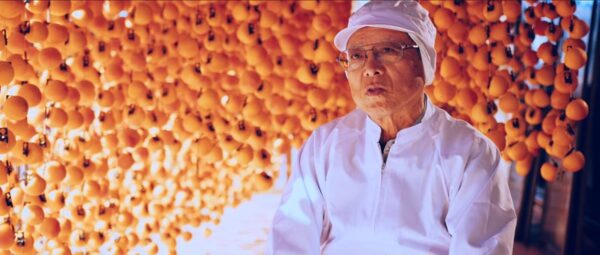
Mibu Yoshihiro
"If the surface of dried persimmons becomes hard, the contents will not dry out. This "asagiri" helps to remove the moisture inside while keeping the surface soft. I think this fog is the reason why Ichida persimmon took root," says Mibu Yoshihiro.
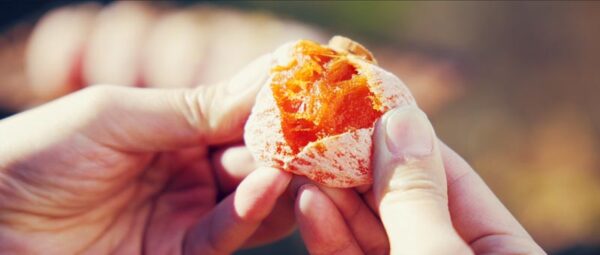
Although Ichida persimmons are smaller than other dried persimmons in Japan, they are also a balanced element that removes moisture. The persimmons are dried until the weight reaches about 35%, and when the vertical wrinkles and white powder are packed with, and the flesh is bright orange-colored yokan-like, and the Ichida persimmon is finished.

Kimura Shigeomi
One of the characteristics of Ichida persimmons is the white powder that touches the surface, but is made from crystallized sugar contained in the persimmon itself. It is produced by carefully crafting persimmons while they are dry. In the past, they would be hand-storing and rocking them on a basket to bring out flour. Currently, by using a massager and rotating the persimmons inside the massager, the moisture will go out and the persimmon itself will become average water content.それをまた干すことによって表面が乾く、この作業を繰り返しながら全体の水分を偏りなく抜いていくのだそうです。
In 2016, Ichida persimmon was also certified as a geographically insignified product (GI) by the Ministry of Agriculture, Forestry and Fisheries.
"Ichida persimmon is JA MinamiShinshuWe have been working to improve our quality over many years through technical guidance. "After being registered with GI, I've become even more serious," says Kimura Shigeomi.
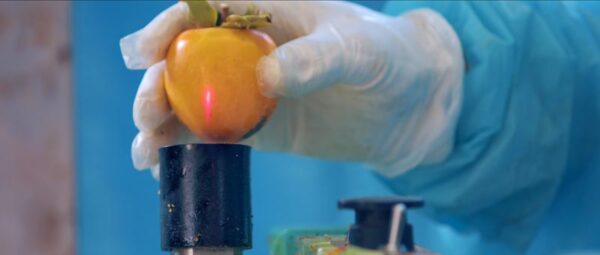
Currently, we are producing Ichida persimmon under thorough management, taking care to ensure that the quality does not fall apart depending on the maker. Machines such as peelers have become more efficient each year, and with the addition of these hardware aspects, the appearance and taste have become even more uniform, and the production volume is also increasing.
As natural dried fruits become increasingly popular nationwide, they are also facing problems such as global warming and the aging of farmers.
"I feel the impact of global warming quite a bit. It can't be helped because it's a natural phenomenon, but I think we need to think more about how we can respond and produce it in the future," says Kimura.
Ichida Kaki is increasing in demand, including secondary processing and exports to Western and Japanese sweets. In 2021, we mark the 100th anniversary of the birth of Ichida Kaki, and we are honing our further skills to pass on to the next generation.
This article is information as of November 2022.
Please note that the products we carry may have changed.















